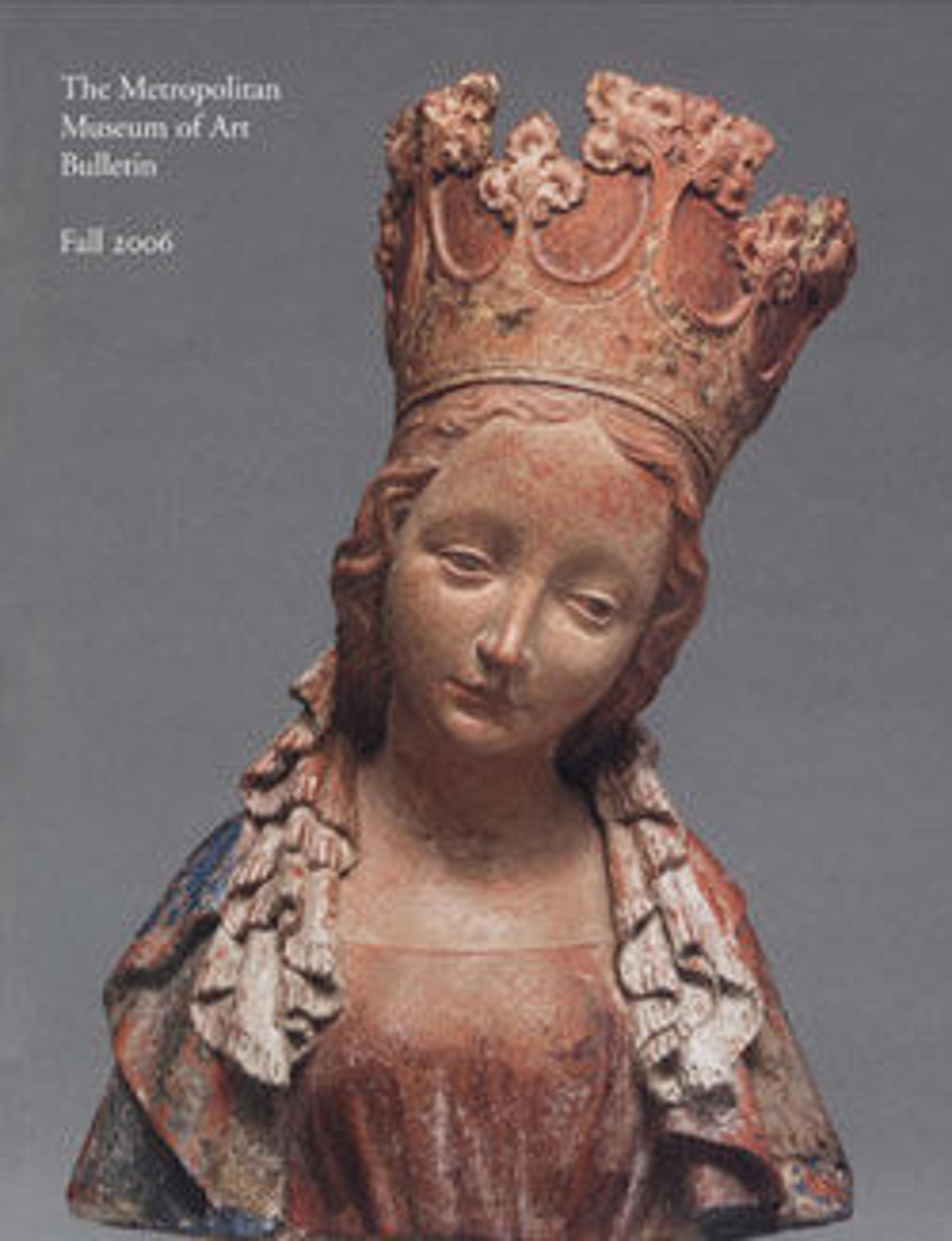Allegory of Music
To create this panel three leather sheets decorated in the cuir bouilli technique, whereby the wet leather was manipulated and molded into the desired shape, were joined together. After the material was hardened and dry, the ornamental details were incised and punched into the surface. The decorated panel and the separate egg-and-dart frame, also made of leather and possibly original to the piece, were then mounted on an oak panel that was at one point installed as a door.
The large elongated female figure clad in a richly draped costume and holding a viola da braccio is most likely Polyhymnia, the ancient Greek muse of sacred music, or the personification of music. The panel may have been part of an extensive wall decoration incorporating the Seven Liberal Arts, a typical Humanist scheme, for a modestly sized studiolo, or study. If so, this is the largest known Renaissance leather panel of its kind. The Mannerist scrollwork and grotesque figures recall the ornamental vocabulary of the "second school" of artisans at the Château de Fontainebleau in northern France, hired by King Henry IV (1553-1610). The sculptural creatures and masterfully conceived linear motifs, combined with the architectural texture of the composition, point to an experienced workshop.
The large elongated female figure clad in a richly draped costume and holding a viola da braccio is most likely Polyhymnia, the ancient Greek muse of sacred music, or the personification of music. The panel may have been part of an extensive wall decoration incorporating the Seven Liberal Arts, a typical Humanist scheme, for a modestly sized studiolo, or study. If so, this is the largest known Renaissance leather panel of its kind. The Mannerist scrollwork and grotesque figures recall the ornamental vocabulary of the "second school" of artisans at the Château de Fontainebleau in northern France, hired by King Henry IV (1553-1610). The sculptural creatures and masterfully conceived linear motifs, combined with the architectural texture of the composition, point to an experienced workshop.
Artwork Details
- Title: Allegory of Music
- Date: ca. 1570–90
- Culture: Northern French
- Medium: Leather, blind stamped, embossed, molded and incised; on later wooden mount
- Dimensions: Framed: 56 1/2 × 26 3/4 × 1 1/2 in. (143.5 × 67.9 × 3.8 cm);
Overall (leather inset): 49 1/4 × 19 1/8 in. (125.1 × 48.6 cm) - Classification: Natural Substances-Leatherwork
- Credit Line: Purchase, Funds from various donors, Rogers Fund, and Joseph Cohen Gift, 2006
- Object Number: 2006.71
- Curatorial Department: European Sculpture and Decorative Arts
More Artwork
Research Resources
The Met provides unparalleled resources for research and welcomes an international community of students and scholars. The Met's Open Access API is where creators and researchers can connect to the The Met collection. Open Access data and public domain images are available for unrestricted commercial and noncommercial use without permission or fee.
To request images under copyright and other restrictions, please use this Image Request form.
Feedback
We continue to research and examine historical and cultural context for objects in The Met collection. If you have comments or questions about this object record, please contact us using the form below. The Museum looks forward to receiving your comments.
